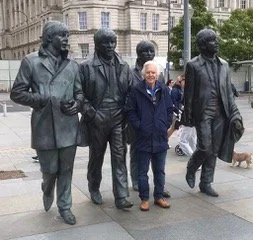By Stephen O. Frazier
The email's subject line read, “Your #1 source for better hearing!” Probably junk, I thought, but I was intrigued and the outcome was not what I expected.
Within a couple of days I was participating in a 45-day free trial of Signia hearing aids from Hear.com. Should I decide to keep them, the pair would cost me $2,750 versus $6,000 at a typical private clinic. A little online research found these exact hearing aids were priced anywhere from $3,700 to $6,000, based on an online sampling of hearing care offices that post their prices. I felt I would be getting a deal comparable to the savings available at Costco, where I'd been buying my hearing aids for the past 20 years.
How Hear got my name is a mystery to me. I got the message on one of my email accounts and then a few days later, on a different account, so I suspect they're buying addresses from some hearing loss-related source on the internet. The emails in question were sent by a company owned by a hearing aid manufacturer, using what is called “blended distribution.”
Credit: Photo by Mark Paton on Unsplash.
The company is WS Audiology (WSA), which develops, manufactures, sells, and distributes hearing aids and services under brands including A&M, Audibene, Audio Service, Bloom, Coselgi, Hear.com, HearUSA, Lifestyle Hearing Network, Rexton, Signia, Shoebox, TruHearing, and Widex—sort of the General Motors of the hearing aid industry. (To be fair, there are only five major hearing aid manufacturers worldwide.)
WSA still sells hearing aids to independent hearing care providers who usually mark up their cost and then resell them to clients. But now they also sell them directly to consumers over the internet—through a subsidiary they own, at prices competitive with those offered by Costco, Sam's Club, and other off-price hearing aid sellers that these independent providers cannot match.
The online subsidiaries then usually refer the buyer to one of their affiliated local audiologists or hearing instrument specialists where a hearing test is administered and the hearing aids are programmed and dispensed.
Not Really New
This business model is not new. ZipHearing introduced online hearing aid sales a decade ago as did Audicus. Both, still independently owned, are major players in this growing segment of the industry. Online Hearing and Precise Hearing are two other online hearing aid sales outlets in the expanding field of “mail order” hearing aids, and the concept is just one of many changes taking place in the hearing care industry.
They were preceded in the business by the very successful entry of Costco and then Sam’s Club. Walmart and chains like CVS dabbled in the business but then got out. The latest iteration of the hearing aid sales business will be the entry later this year of the long-promised, direct over-the-counter (OTC) sale of hearing aids—expected to be on the shelves at your local Target, Walgreens, and elsewhere by the fall of 2022.
GN Group, the manufacturer of hearing aids branded ReSound, Beltone, Interton, Jabra, BlueParrott, and FalCom, has also recently adopted this business model with their recent purchase of Lively which, like Hear, started out as an independent business. Swiss-owned Sonova, whose brands include Phonak, Unitron, and Hansaton, is using blended distribution through HearingPlanet where you can buy their brands or those of competitors. It should be noted that I found substantial price differences for specific hearing aids among these blended online retailers—which is likely because those brands were not one of theirs.
The blended business model relies heavily on the internet to capture customers, and it's reported that those customers are around 10 years younger than the typical hearing care office's clientele. Tech-savvy boomers are accustomed to researching options and shopping online, and they may find and rely on resources such as the Hearing Loss Association of America and the consumer section of the American Academy of Audiology.
In the process of searching online, these consumers will come across the websites of these blended hearing aid providers where they'll find a wealth of information on hearing loss and its treatment. They may find these websites offer them little of the “hard sell” rhetoric from private clinics, where audiologists or dispensers are often working on a commission.
What does this educated consumer end up deciding to do? Read this story in full in the Spring 2022 issue of Hearing Health magazine.
Trained by the Hearing Loss Association of America as a hearing loss support specialist, New Mexico resident Stephen O. Frazier has served HLAA and others at the local, state, and national levels as a volunteer in their efforts to improve communication access for people with hearing loss. For more, see sofnabq.com and loopnm.com.








Cochlear implants were never on our radar, and the topic arose what felt like out of the blue while talking to his audiologist who said hearing aids could no longer improve his ability to better understand speech.